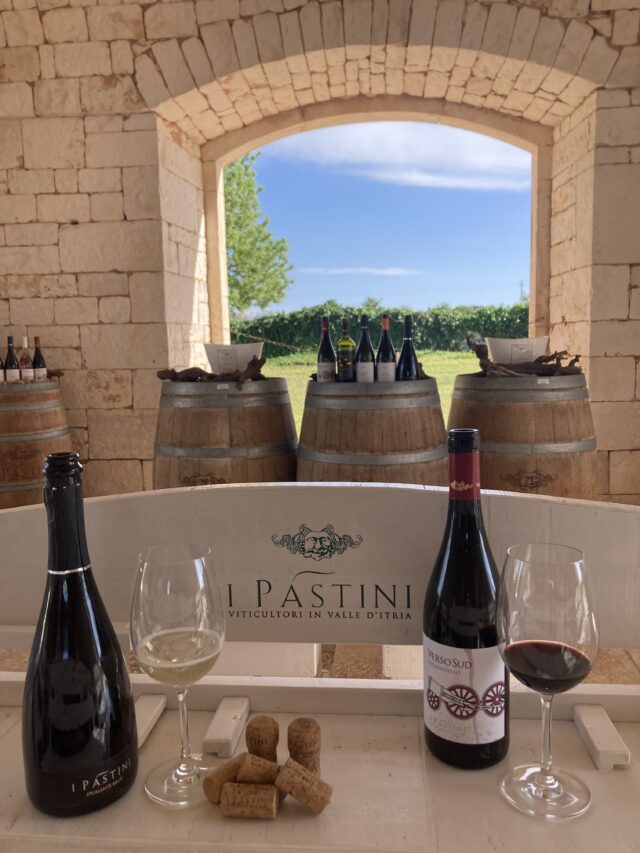My husband and I recently returned from a glorious month driving around Southern Italy including stays in Sicily, Calabria and Puglia with a stop in Basilicata to tour the magical city of Matera. Every day was an indulgence in food, wine, olive oil, history, art, culture, and of course the beauty of the people and their land. Meeting families who have been toiling for generations to bring the verdant land to life added rich local flavor.
With the exceptional food and wine, beaches, accommodations, historical places and more that are part of every day, it’s impossible to highlight everything, but here are some real gems that shouldn’t be missed.
Sicily, located just off the toe of the boot, is the largest island in the Mediterranean. Its historical richness is not to be missed. We headed to Mount Etna on the eastern edge of the island. Etna is one of Europe’s highest active volcanoes, and in fact, spewed smoke rings days before we visited. Over time, these lava flows leave rich sediment.
The Palmento Costanzo winery has an imposing presence at the north foot of Etna. The passionate Costanzo family rediscovered and restored the estate in 2010. They are committed to terroir and the organic and biodynamic production of quality wines. Sustainability is the centerpiece of their business.
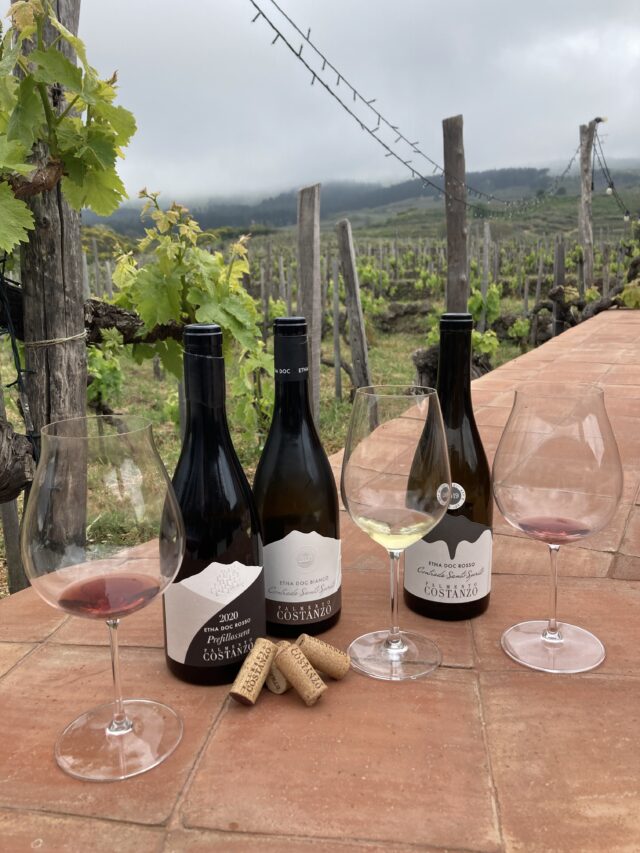
The history of traditional winemaking is evident in how they rescued the limestone palmento (the ancient wine-making room) and transformed it for use today. The multi-level system moves the grapes from their entrance point in the palmento to the elevated pressing tank then to stone canals in the cellar via gravitational pull. The meticulous restoration has incorporated technological innovation without compromising very old traditions. The varietals are indigenous and are sourced from small plots on their more than 40 acres in the north (as well as a few acres at the southwest of the mountain). The unique wine labels reflect the Etna Denominazione di Origine Controllata (DOC).
Visitors can opt for one of the authentic experiences with a wine pairing and multicourse array of distinctive Sicilian dishes. Among the wines we savored were the 2020 Etna DOC Rosso Prefillossera, the 2019 Etna DOC Contrada Sento Spirito Rosso and the 2020 Etna DOC Bianco Contrada Sento Spirito. Rotating ingredients seasonally, the food pairings include local artisanal specialties such as cheeses, sausages, caponata and a special rice timbale “Norma” style with eggplant, tomato marinara sauce and salty ricotta on top.
In the seaside town of Syracuse, in Sicily’s southeastern corner, we met the Cavarra family. We discovered their olive oil lab and production facility behind a nondescript door. They are the owners of Terraliva, known for its artisanal award-winning extra virgin olive oils. The company was founded in 2003; today it’s operated by the husband-wife-daughter team of Cavarras.
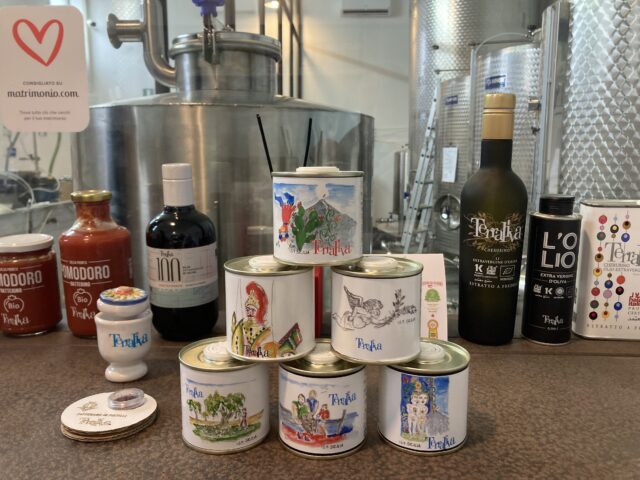
The olives are organically grown on over 25 acres of rich volcanic soil in Buccheri, about 20 miles from Syracuse. Buccheri is over 2,000-feet-above-sea-level which provides hot days and cold nights for the trees. After they are hand-picked, the olives are transported to Syracuse where they are cold pressed and prepped for distribution.
Complex, yet balanced between spicy and bitter, the oils evoke fragrances of green grass, artichoke, tomato, almonds, dried fruit and nuts and more. This powerhouse family produces a range of other products (tomato sauce, saffron and pastas all made to their specifications). All of their innovative packaging is environmentally-friendly and specifically designed to meet the needs of each customer. The designs range from Etruscan glass, cobalt or stainless steel bottles to colorfully conceived tins and bags in boxes.
Calabria is considered the toe of the boot and is bordered on the east by the Ionian Sea and the west by the Tyrrhenian Sea. It boasts sun-drenched coastlines, great beaches and craggy mountains. We stopped in the coastal town of Torre Melissa to visit one of the Cantine De Luca facilities. Abramo De Luca, the patriarch of the family, began making wine in 1994 with estate fruit grown in the Melissa DOC. Family members now run an entrepreneurial business with grapes grown mainly in the Cirò and Melissa DOCs.
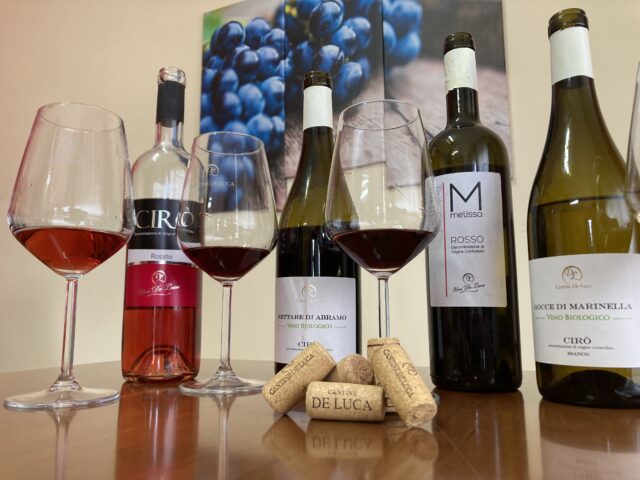
The family is driven by their fervor for the land, the environment, native vines and winemaking history and traditions. They produce mainly organic grapes in the area between the mountains and the sea. Typical Calabrian grapes include Gaglioppo, Nerello Calabrese and Greco Bianco.
After tasting through several lines of wine, standouts include the 2023 Cirò Rosato, the 2021 Nettaro de Abramo, the 2023 Gocce di Marinella and the 2020 Melissa Rosso. Particularly notable is their 1949, dedicated to the historical day in October, 1949 when poor farmers in Melissa were massacred as they fought for their land; we had the 2021.
In Puglia, the heel of the boot, we discovered towns awash in the sunshine and beaches of the Adriatic. Centuries-old stone walls stretch for miles and surround vineyards and olive groves.
In the charming seaside town of Monopoli, we had the good fortune of meeting the family behind Masseria Arenazza: The father oversees the olive oil tasting room in town while others in the family are busy with growing, production, marketing and distribution. Just down the busy Via Porto, son Giacomo and relatives operate the ever popular Tuttoapposto wine bar. Intimately designed as a wine cellar in a building overlooking the port, it’s a lively spot to take in the scene and taste Puglian wines.
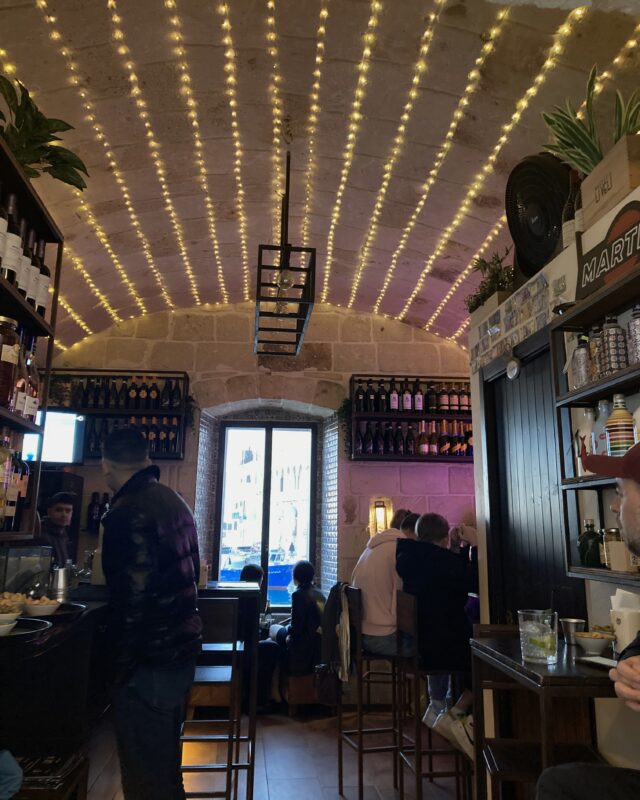
The Carparelli family founded I Pàstini, in 1996; it is now led by the third generation. The property sits near Martina Franca and Locorotondo in the heart of the Valle d’Itria. This idyllic location allows vines to flourish with the Mediterranean climate and moist evening sea breezes. Unfortunately, this doesn’t alleviate the lack of rain the region receives. The Carparelli named the winery I Pàstini to pay tribute to the postino, a tool once used to shape a dam to collect rainwater.
Their passionate focus on terroir and tradition is evident in their goal to make sure indigenous vines from the region flourish as well as in their winemaking by combining ancient and modern techniques.
On their 40 acres (some on the coast), they grow three whites and two reds. After a tour of vineyards and the production room, we tasted the wines with olives, dried fava beans and taralli (a regional specialty cracker). Favorites include the 2021 Arpago Primitivo, the 2022 Verso Sud Susumaniello and the 2023 Spumante Brut.
The spectacular town of Matera, in the region of Basilicata, dates back to prehistoric times and is known as the city of caves. Its jaw-dropping views and picturesque ravine constasts the history of its people, who lived in squalid conditions in the mountainside caves until 1952. Today, some have been preserved with period pieces and are open to the public.
The most dramatic site we visited was MUSMA (Museo Della Scultura Contemporanea Matera). This cave museum is singular in the world and for Italy, the premier venue for sculpture. Stepping inside is like being transported to another world. Situated in a former Palazzo, the more than 20,000 square foot museum sits on two floors: the built up upper floors that were the family residence, and the hypogea below dug into limestone that included stables, warehouses, oil mills and areas to crush grapes.
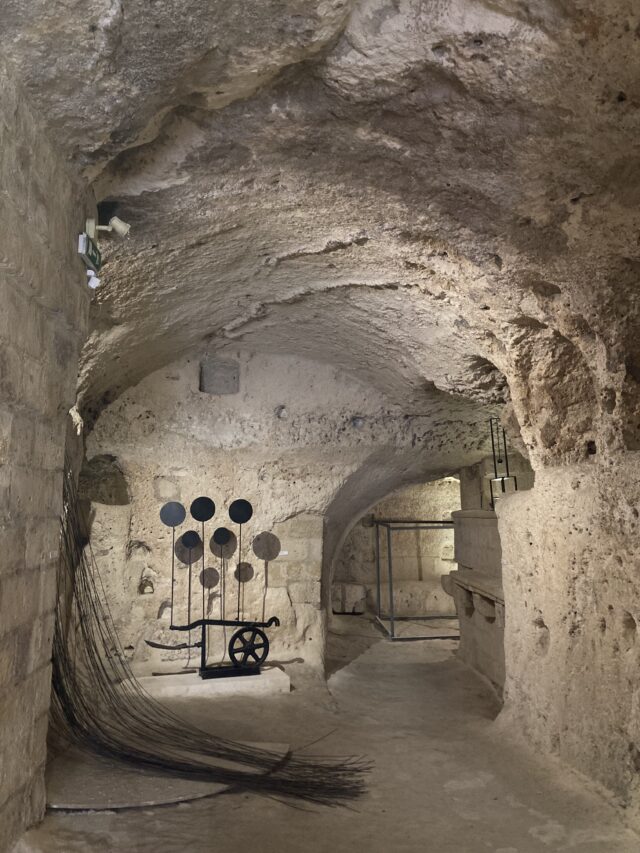
Opened in 2006, MUSMA’s collection contains about 400 works by Italian and international artists from the late 1800s to the present. In addition to the phenomenal display of sculpture, visitors have access to jewelry, engravings, drawings, art books and more. The museum’s educational component reaches children and adults alike to help grow an appreciation for their cultural heritage.
OTHER ESSENTIALS:
Wines From Italy
Wines From Calabria
Wines from Puglia
Wines of Sicily
Connect with Patty Burness on via Instagram: @pburness, or email: [email protected]. Comments: [email protected].

